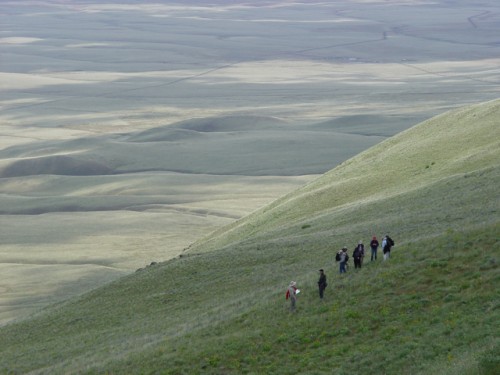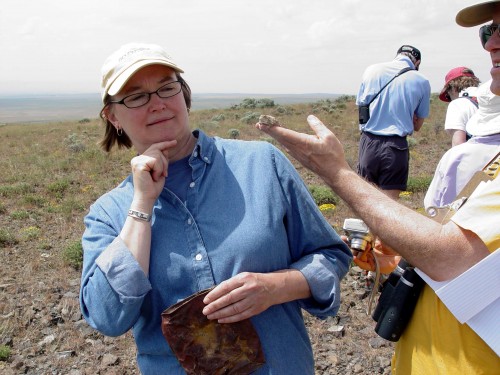Bunchgrass Dreams : High Desert Ecology with Mark Darrach

The Institute is venturing over to eastern Washington the weekend of May 15-16 for a very special field excursion with biologist and geologist Mark Darrach. “Bunchgrass Dreams: High Desert Ecology” explores the Arid Land Ecology Reserve, located within the Hanford Nuclear Reservation near the Tri-Cities in Eastern Washington, which is the largest remnant of native sagebrush-steppe habitat in the state. An unspoiled refuge for an indigenous landscape disappearing throughout the intermountain West, the ALE is home to an entire community of diverse and unique plants, reptiles, birds and mammals, including Rattlesnake Mountain milk-vetch, Rocky Mountain elk, Piper’s daisies, burrowing owls, sagebrush lizards, Swainson’s hawks and more than 45 species of butterflies.
This excursion is extra-special because the ALE is off-limits to the general public and there are very few guides that have permission to enter it. We’re very fortunate that Mark has access to this landscape and is willing to lead an Institute exploration for us. There are a handful of spots still open for registration — you can sign up via our website or by calling Kacey at (360) 854-2599.

And finally, here are an Institute staffer’s reflections from attending this field excursions a few years ago:
Our weekend on Rattlesnake Mountain is one I will never forget. I’d seen that mysterious hump across the shrub steppe ranchland of southeastern Washington as I criss-crossed the state by car, but never knew much about it. Â It’s big! At more than 3,500 feet, it’s one of the tallest, treeless mountains in the world and you can see vast stretches of Washington from its crown. It’s also impossible for casual hikers to visit because access to it is very limited. The Institute’s entree under Mark Darrach’s guidance is something special. When Mark unlocked the access road gate at the foot of the mountain, and we quietly entered, I felt like we were being allowed “backstage” into one of the most mysterious and complex landscapes in the Northwest.

The mountain is a convergence of culture, natural history, politics and botany and I can’t imagine anyone knows more about it than Mark Darrach. We spent two days with him and the questions and conversations ranged widely; I don’t believe we ever asked him a question that he couldn’t answer. A luxury of intellect in a remarkable natural setting.
–Kris Molesworth (Photos by Carl Molesworth)

